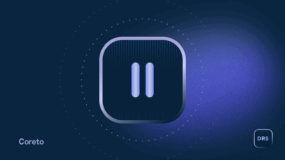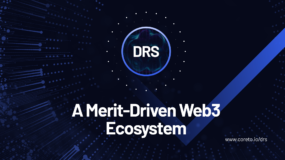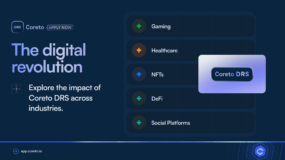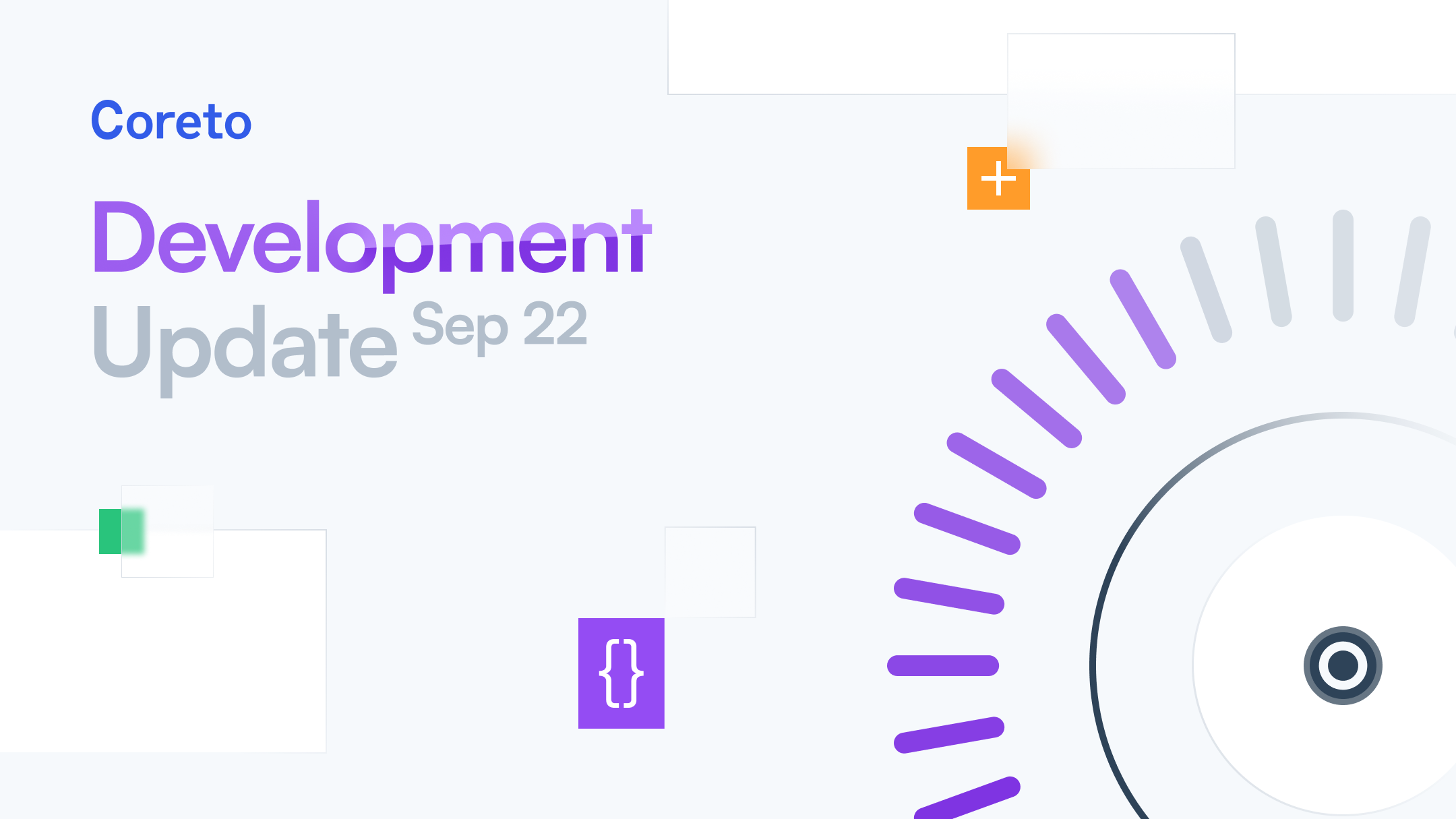
In our previous update we launched the first version of our Decentralized Reputation System (DRS) on the NEAR testnet. We have since been testing the system with the help of our community of early adopters.
The time has come to say goodbye to the testnet and enable our Decentralized Reputation System on the NEAR mainnet!
Key points:
- Decentralized Reputation Tracking on NEAR [LIVE]
- Using the Decentralized Reputation System
Decentralized Reputation Tracking on NEAR
In our previous Dev Update, we took a closer look at what the Decentralized Reputation System is, how it’s built and how each piece fits together.
As a short reminder, the system is build on three main components:
- the Reputation Collection Service (RCS) – converting user actions into Trust and Performance points, based on predefined KPIs;
- the Decentralized Reputation Tracker (DRT) – receiving and storing the Trust and Performance points collected by the RCS on-chain, providing an immutable history of each user’s evolution over time;
- the Reputation Scoring Service (RSS) – converting the on-chain Trust and Performance history stored by the DRT into the final Reputation scores for each individual, using our unique Trust and Performance algorithms.
Together, these three main components are what we call the Decentralized Reputation System, and they are complemented by our Decentralized ID system, which helps us link all the pieces together.
Starting TODAY, one of the most important components of the system is LIVE on the NEAR mainnet! The Decentralized Reputation Tracker (DRT) smart contract has already been deployed on-chain, together with the Decentralized ID smart contract.
Both systems are now live on the Coreto Platform, and you can enable the #DRS on your account, and have your Trust and Performance score tracked on-chain by connecting your NEAR wallet to your Coreto account on the platform.
If you’re new to the space, or haven’t had the chance to interact with the NEAR ecosystem, don’t worry, just continue reading.
Using the Decentralized Reputation System
NEAR is a sharded, proof-of-stake, layer-one blockchain that is simple to use, secure and scalable.
Many of you might be familiar with Ethereum and Ethereum Virtual Machine (EVM) compatible blockchains like Binance Smart Chain or Polygon. You might also be familiar with popular wallets like MetaMask, that are used to interact with dApps on EVM chains.
And while you can use these familiar wallets on Aurora (an EVM compatible layer 2 chain on NEAR), they will not work on the NEAR layer one chain.
Don’t let that scare you, though! The official NEAR wallet follows the same principles that you are already familiar with, while providing an user friendly, easy to use interface.
First, let’s get you a NEAR wallet!
How do I get a NEAR Wallet?
The NEAR team has put together a great tutorial, explaining the whole process step by step.
Take a few minutes and read this great article about how to get started with the NEAR Wallet, and come back.
Once you have your wallet, you can connect it to the Coreto Platform.
How do I connect my NEAR wallet to Coreto?
Once you have your NEAR wallet, the process of connecting it to the Coreto Platform and enabling your on-chain reputation is very simple – just follow the steps below.
Whether you already have your Coreto account, or you are just creating one, the steps are the same, and you can decide to have your reputation tracked on-chain at any time.
- After logging in on the Coreto Platform, go to your profile settings and access the Coreto DID tab.
Here you will need to click on the “Connect Wallet” button.

- You will be taken to the NEAR Wallet interface where you will need to select the wallet that you want to use from the list of available wallets you have. Or you can just create a new one.
Just select the one you like and click “Next”.
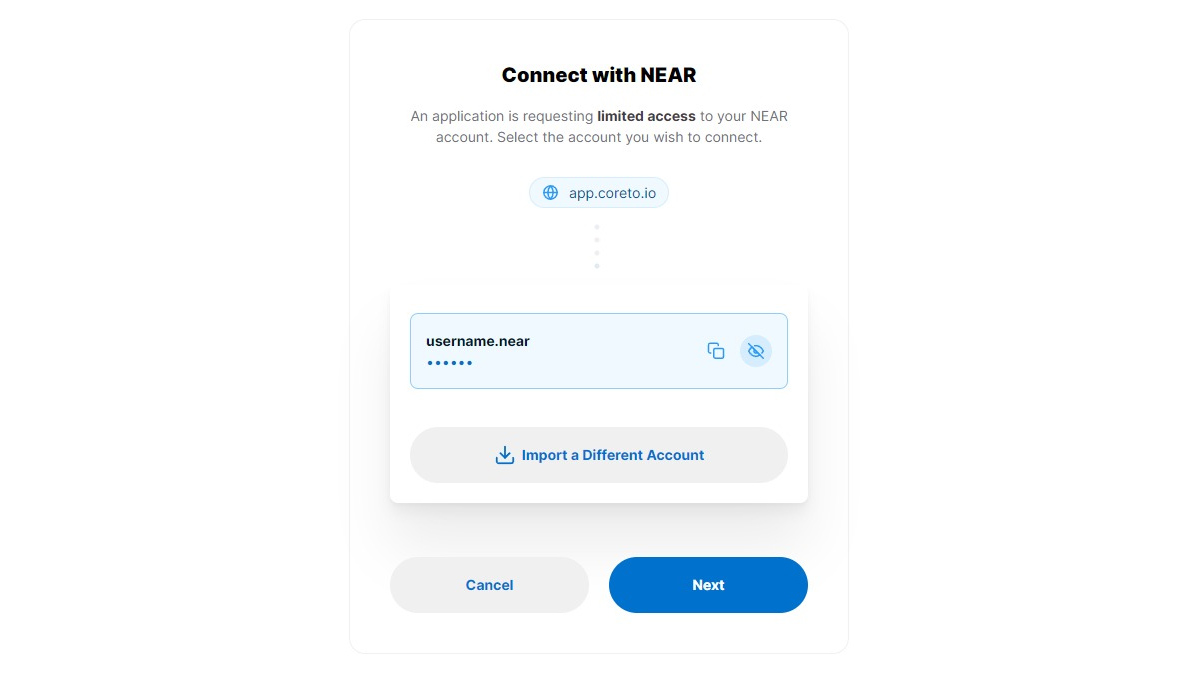
- On the next screen, you will need to approve connecting your wallet to the platform.
Just click the “Connect” button.

- Your wallet is now connected and you will be taken back to the Coreto Platform.
That’s it!
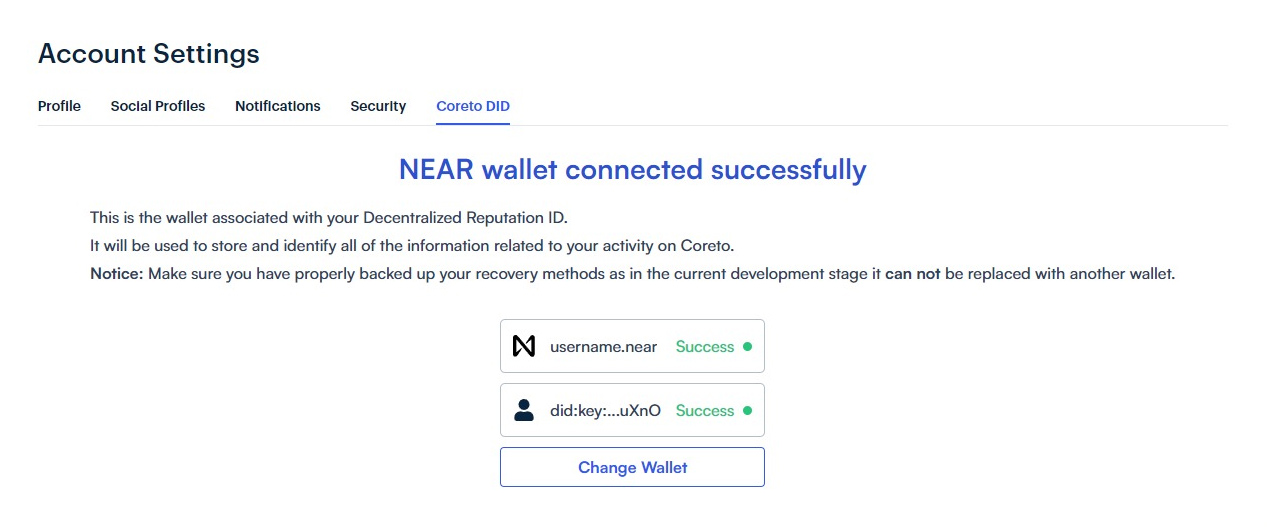
You can also change your connected wallet any time by following the same steps, the only difference being that you will need to provide an extra security code. Depending on your settings, you will need to get this code by way of the email you used for your Coreto account (an email will be sent automatically), or by accessing the 2FA app of your choice if you have this option enabled.
Other updates
The current update includes one of the biggest milestones to date, but that’s not all. We also took the time to fix a great number of issues that we received from our early testers:
- bug fixes
- small UI/UX improvements
- performance optimizations
- security updates
- and more.
We keep optimizing existing features based on your feedback. Using the platform, sending us feedback and helping us iron out the kinks is all part of how we get ready for the future.
And speaking of the future…
What’s next?
One of our biggest UI/UX updates for the platform is just around the corner! We have been hard at work, improving the look & feel of the platform, making the transition to a cleaner and clearer experience for our users.
A simpler navigation, a new main feed and upgraded post types are just a few of the changes that will be included in the next update, planned to go live on September 22nd.
Save the date and have a look at the preview of what’s to come HERE.
We are also working on preparing the Decentralized Reputation System for integrations outside the Coreto Platform. Getting the needed tools ready for other projects to be able to integrate and use the Coreto DRS inside their platforms is a big part of how we move forward and expand, by helping bring Trust & Performance to the crypto space and beyond.
Of course, there are many other surprises we have planned.
But that’s a story for another time!

